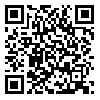Mon, Dec 15, 2025
| فارسی
Volume 13, Issue 1 (Spring 2011)
Advances in Cognitive Sciences 2011, 13(1): 25-34 |
Back to browse issues page
Download citation:
BibTeX | RIS | EndNote | Medlars | ProCite | Reference Manager | RefWorks
Send citation to:



BibTeX | RIS | EndNote | Medlars | ProCite | Reference Manager | RefWorks
Send citation to:
Amini* R, Dolatshahi B, Pourshahbaz A. Role of Thought-action Fusion in Explaining Obsession Symptoms. Advances in Cognitive Sciences 2011; 13 (1) :25-34
URL: http://icssjournal.ir/article-1-315-en.html
URL: http://icssjournal.ir/article-1-315-en.html
1- clinical psychology, University of Social Welfare and Rehabilitation Sciences, Tehran, Iran.
2- Assistant Professor, University of Social Welfare and Rehabilitation Sciences, Tehran, Iran.
2- Assistant Professor, University of Social Welfare and Rehabilitation Sciences, Tehran, Iran.
Abstract: (3066 Views)
Objective: The purpose of this study is to explain the role of thought-action fusion in obsession symptoms.
Method: The study is a correlation research. Its statistical universe comprised of all undergraduate students of the ages between 18 and 25, who were studying at the University of Social Welfare and Rehabilitation Sciences. Of them, 205 students were selected by Stratified Sampling. This study was conducted with thought- action fusion scale and Maudsley Obsessive-Compulsive Inventory (MOCI).
Results: The findings show that there are positive correlations between TAF-total and obsession symptoms. Based on regression analysis among TAF subscales, Likelihood for Self and Morality significantly anticipated obsession symptoms.
Conclusion: Obsession symptoms can be explained by thought-action fusion belief.
Method: The study is a correlation research. Its statistical universe comprised of all undergraduate students of the ages between 18 and 25, who were studying at the University of Social Welfare and Rehabilitation Sciences. Of them, 205 students were selected by Stratified Sampling. This study was conducted with thought- action fusion scale and Maudsley Obsessive-Compulsive Inventory (MOCI).
Results: The findings show that there are positive correlations between TAF-total and obsession symptoms. Based on regression analysis among TAF subscales, Likelihood for Self and Morality significantly anticipated obsession symptoms.
Conclusion: Obsession symptoms can be explained by thought-action fusion belief.
Keywords: Thought–Action Fusion, Obsession
Type of Study: Research |
Subject:
Special
Received: 2010/11/22 | Accepted: 2011/01/21 | Published: 2011/03/21
Received: 2010/11/22 | Accepted: 2011/01/21 | Published: 2011/03/21
Send email to the article author
| Rights and permissions | |
 |
This work is licensed under a Creative Commons Attribution-NonCommercial 4.0 International License. |



